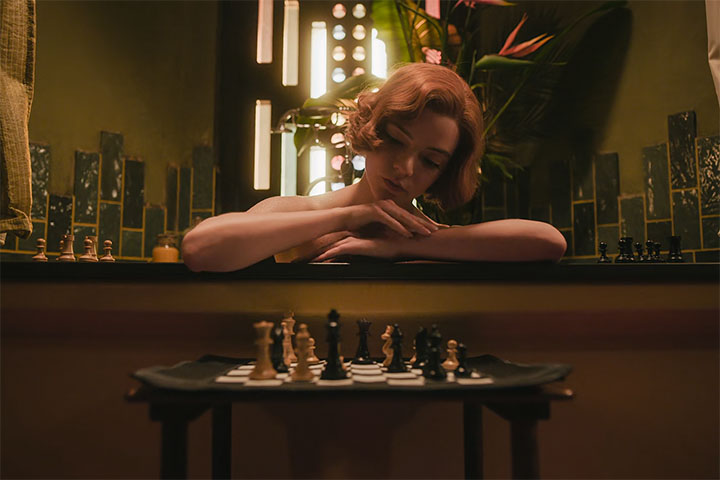


Chess players always feel a combination of excitement and dread when a movie is released that either contains chess or is actually about our beloved game. The excitement needs no explanation, and the dread is the flood of technical problems that seem to inevitably appear. When I reported the new mini-series on Netflix to a colleague, his first question was, “Did they get the color of the squares for the kings and queens right?” This seemingly sarcastic comment belies the standard chess aficionados usually face. The good news is that not only is chess superbly rendered, with a wide variety of grandmaster-level positions and situations, but the story and production of “The Queen’s Gambit” is exceptional on all levels. Simply put: this is easily the best chess movie or series to ever grace the screens.
The story takes place in the 1960s and recounts the story of the recently orphaned Beth Harmon, nine years old, who finds herself in an all-girls orphanage run by a Christian group with strict values. These values do not exclude administering tranquilizers to its tenants for ‘mood control’, with lines of girls to receive their pills in small paper cups much like a psychiatric institute.
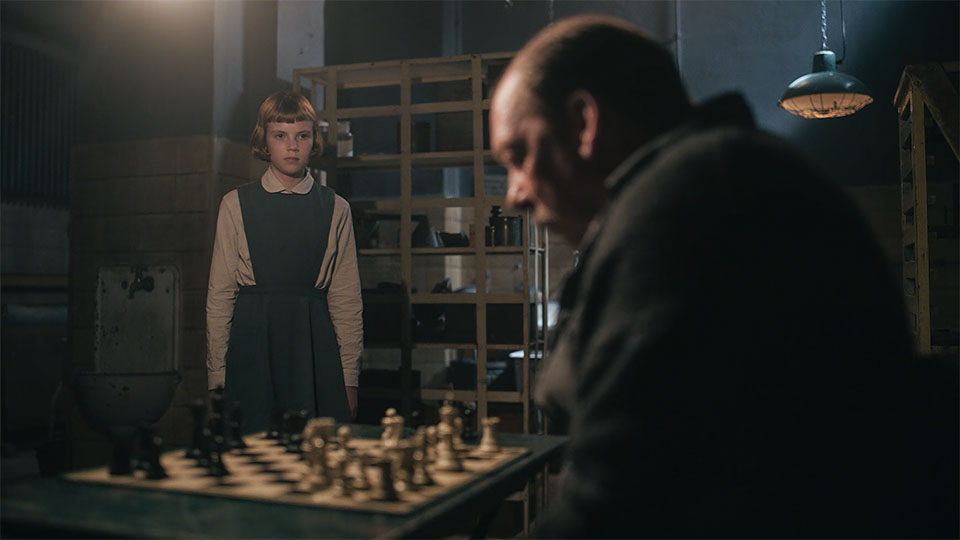
Mr. Schaibel played by Bill Camp becomes the central male figure in her early formative years. (Image: Netflix)
Our young heroine is introduced to the royal game by the institute’s resident janitor, handyman and chess aficionado who is seen playing over games in the basement in his leisure time. The curmudgeonly figure, clearly jaded with the steady flow of troubled girls in the locale, is highly reticent to take on Beth as a pupil, but her persistence and natural talent win out and thus begins the rise of the prodigy.
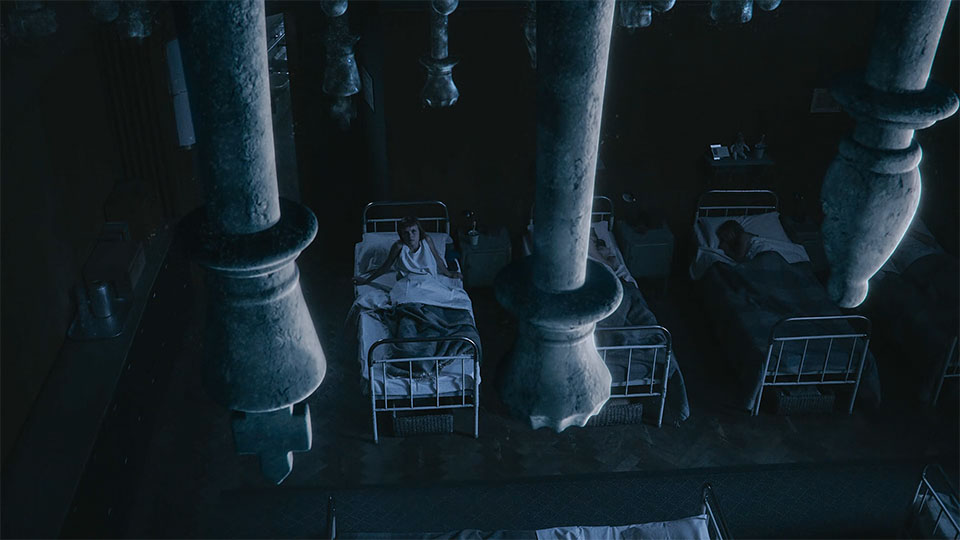
After taking her 'green pill', the slightly addled child begins to picture a chessboard with moving pieces on the ceiling of her dorm. (Image: Netflix)
Although Beth shines as a super talent, she is also a deeply flawed character whose only solace lies in two things: her passion for chess and her addiction to the tranquilizers. It is this duality and struggle between her self-destructiveness and natural ability that define her as much as the world in which she lives, a world that sees her as a female chess player with the emphasis on female. Even a woman journalist interviewing her for Life magazine shows an inability to see beyond this and suggests the ‘less competitive’ game of bridge might suit her gender better.
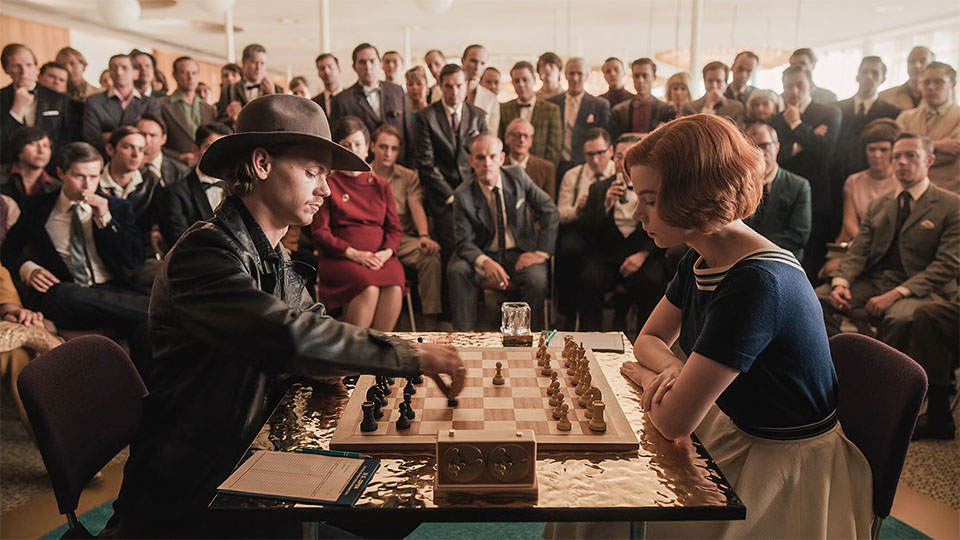
Thomas Brodie-Sangster plays the cowboy hat toting Benny Watts, the top US player prior to Beth. (Image: Netflix)
There is no question that it all comes down to Beth Harmon. While the chess might suffice for chess fans, it certainly won’t be enough for the wider audience, and therein lies part of the greatness of this series. Anya Taylor-Joy’s characterization is a tour de force and should really do wonders for her career.
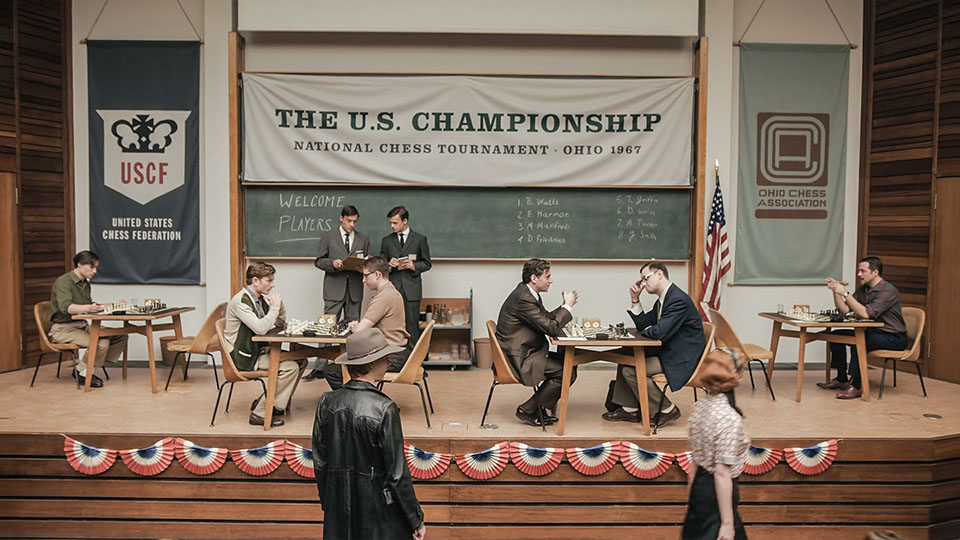
The series clearly brought to light the inherent disadvantage American players had at the time, with the national championship being held in a secondary university compared to the state supported Soviet players in plush conditions and packed theaters. (Image: Netflix)
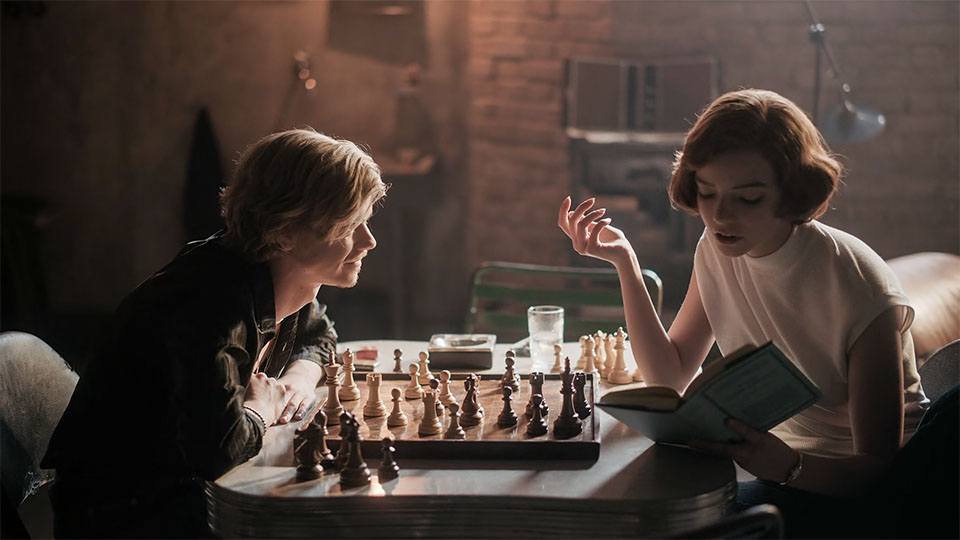
The imagery is a masterclass in backlighting as seen here and throughout. (Image: Netflix)
Taylor-Joy takes over the main character as Beth enters her adolescence, and we see the evolution of the girl’s social awkwardness and youthfulness not just by subtle changes in her hair, but also in her body language, way of walking and presenting herself, all while juggling the pent-up anger and solitude of her existence.
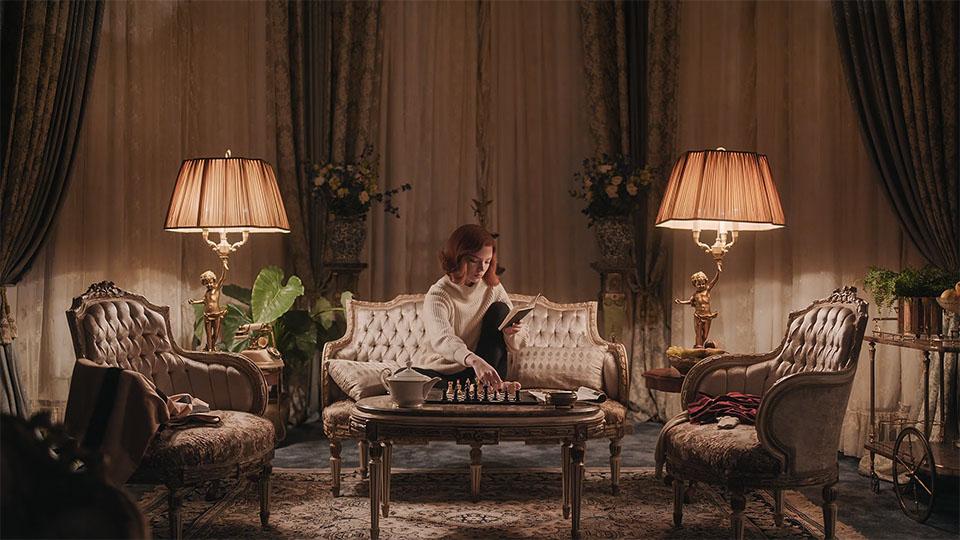
(Image: Netflix)
This solitude is emphasized by the very intelligent camera work. In one scene during her first visit to Paris in the 1960s, we see her arrive at a table with a chess board laid out in a hall exuding elegance and beauty. She hesitates and then sits down to go over a game or position. The camera is quite close at this stage, imparting an impression of intimacy.
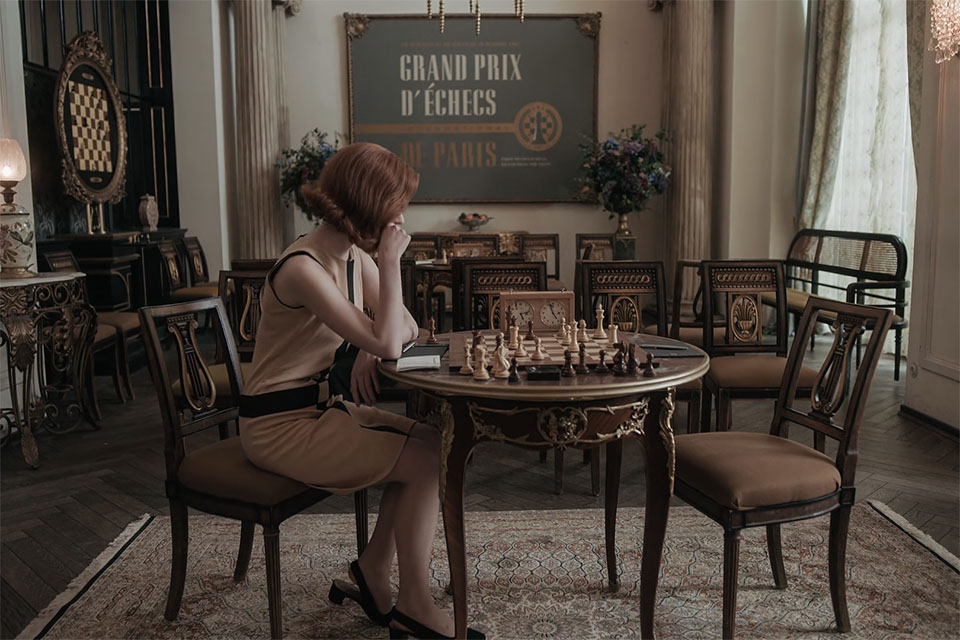
(Image: Netflix)
Then the angle widens and the camera pulls back, and we see the large hall filled with tables, boards, seats, and Old World sophistication, with that lone soul at the board, oblivious to the beauty and emptiness surrounding her.

(Image: Netflix)
The cinematography is no less breathtaking with many carefully composed images that wouldn’t look out of place in a gallery. The palette of colors impresses as well. Most films focus on a very clear and restricted choice of tones and colors, and even the writer/director’s previous mini-series “Godless” (highly recommended) was no exception. Scott Frank’s collaborators broadened this to vary from muted tones and dark blues, such as the scene of young Beth staring at the ceiling, to the warm pastels typical of 60s stills on film, to finally round on the sharp contrasts in the final games played in the Soviet Union.
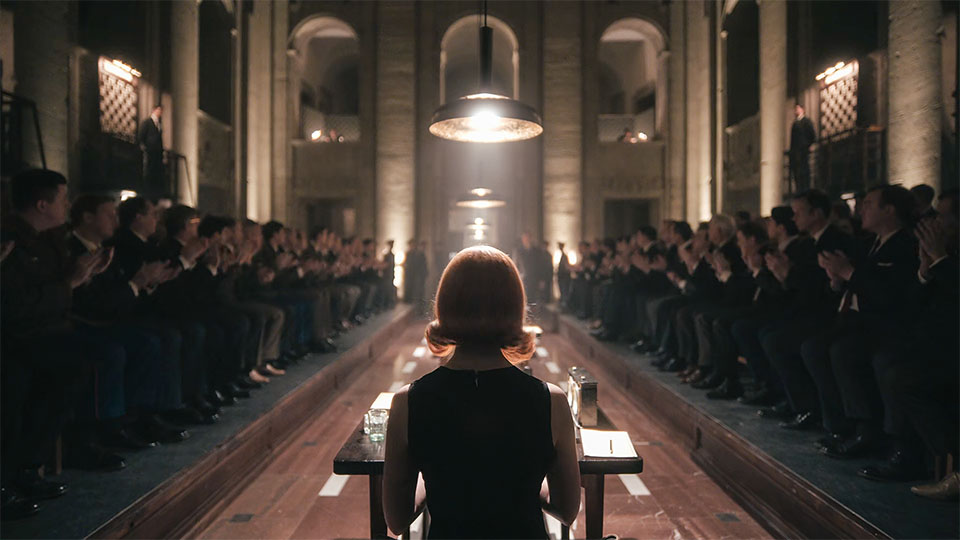
(Image: Netflix)
While discussed already in many other places and articles, one cannot fail to bring up the matter of the chess itself. Clearly expense and effort were expended to ensure this was not to be an embarrassing stumbling point and it pays off.
Anya Taylor-Joy he and co-star Thomas Brodie-Sangster were coached and choreographed by chess consultants Bruce Pandolfini and Garry Kasparov.
“Having them around made me feel like we weren’t going to disappoint people,” says Taylor-Joy. “It’s an entirely different world, and people care about it so much. I wanted to make sure we were telling the story right.” And that they did.
The mini-series is based on the 1983 novel of the same name by Walter Tevis. Walter Tevis seems to be one of those authors blessed with a talent for writing material that filmmakers wish to adapt to the screen. His two most famous works adapted to the silver screen are “The Hustler” and “The Color of Money”, both starring Paul Newman. It should be no big surprise that the miniseries expanded generously on the original material, whilst remaining quite faithful to the story itself. The book itself is solid, albeit somewhat unremarkable, other than the subject matter for the keen Caissans.
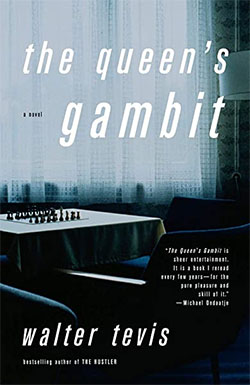
(Image: Amazon.com)
Seen today, obvious parallels will be drawn with the Polgars, and most especially Judit, but keep in mind this was written and published before any of them had made so much as a ripple in the chess world, nevermind the actual tidal waves that ensued, so the idea of a girl beating up on the male-dominated chess world was as exotic as could be when it came out.
The overall reception has been very positive, not merely in the chess world where social media and news outlets describe it as ‘chess done right’, but the general public and critics as well. Metacritic, an amalgam of reviews from critics, has it at a very high 79/100 average, while IMDB, a movie site that allows viewers to weigh in with grades and reviews, has it at a stellar 89/100 as of this writing.